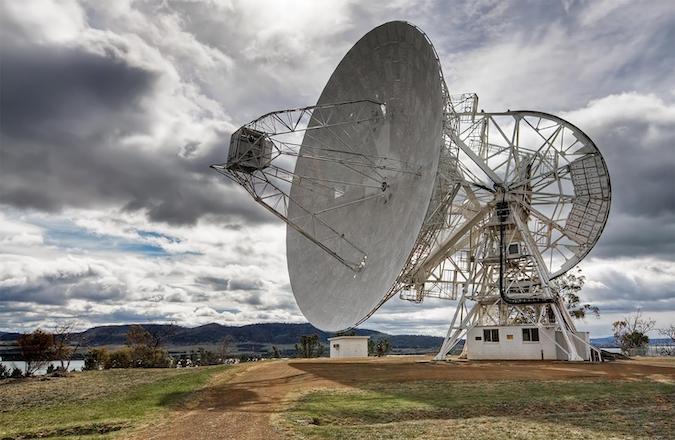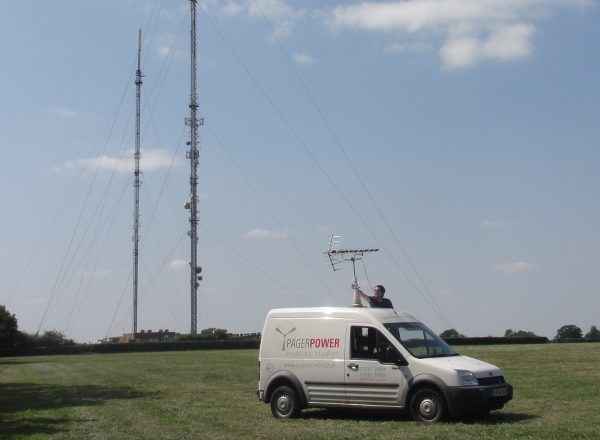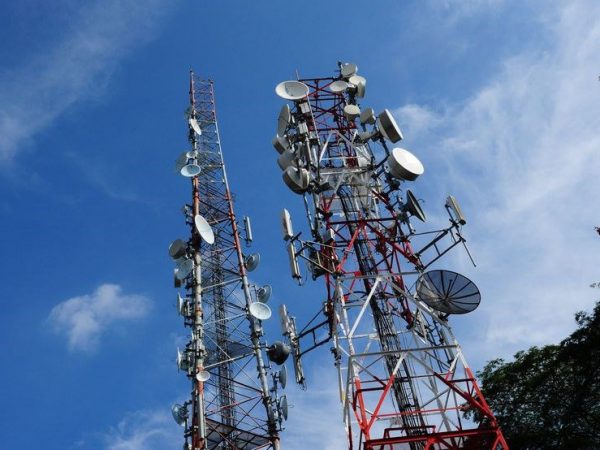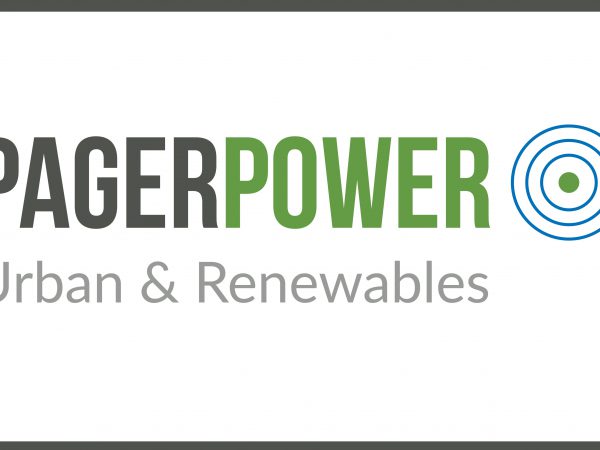Radio telescopes are very important tools in modern astronomy, enabling scientists to explore the universe through radio waves emitted by astronomical bodies [1]. Radio telescopes, unlike optical telescopes that observe light, detect radio frequencies. This enables the observation of radio frequencies up to 3 THz, including pulsars, quasars, black holes, and cosmic microwave background radiation [2]. However, their sensitivity makes them very vulnerable to interference from man-made radio signals. To mitigate this, many radio observatories are surrounded by Radio Quiet Zones or Radio Protection Zones [3].
Radio Telescope, Noodle snacks, CC BY-SA 3.0
Radio Telescopes
A radio telescope is a specialised antenna and receiver system that is used to detect and amplify radio frequency signals from astronomical sources [4]. These telescopes have large parabolic reflector dishes that collect and focus incoming radio waves onto a receiver. Some famous radio telescopes in Europe [5] include:
- Lovell Telescope – United Kingdom;
- LOFAR (Low-Frequency Array) – The Netherlands and across Europe;
- e-MERLIN – United Kingdom;
- NOEMA (Northern Extended Millimetre Array) – France;
- Medicina Radio Observatory – Italy (part of the European VLBI (Very Long Baseline Interferometry));
- Westerbork Synthesis Radio Telescope – The Netherlands.
The frequencies used for radio astronomy are mostly listed in Tables 1 and 2 in Annex 1 of Recommendation ITU-R RA.769 (from the International Telecommunication Union (ITU)), ranging from 13 MHz to 270 GHz [6]. Since radio telescopes are designed to pick up extremely weak signals from space, even small sources of radio frequency interference (RFI) [7] can cause severe disruptions to their operations. Sources of RFI, also called spectrum pollution [8], include Wi-Fi routers, microwave ovens, power lines, cell towers, industrial, scientific and medical (ISM) devices, vehicle ignitions, wind turbines, electric fences, solar farms, and more [9]. These interferences can lead to data loss, inaccurate readings, or complete signal contamination.
Radio Quiet Zones
To protect radio telescopes from interference, many countries have established Radio Quiet Zones (RQZs) [10] [11]. RQZs are areas around radio telescopes where radio transmissions are restricted or banned altogether. The goal of creating a RQZ is to minimise any potential for interference to radio astronomy. Examples of Global RQZ Practices [9]:
- IRAM, Spain – Transmitter restrictions within a 5 km radius; coordination up to 10 km;
- Jodrell Bank, UK – Informal restrictions typically apply within a 10 km radius;
- Itapetinga, Brazil – A 4 km diameter zone with no new urban development;
- Dominion Radio Astrophysical Observatory, Canada – Licensing tightly controlled out to 200 km [12];
- National Radio Quiet Zone (NRQZ), USA – Covers an area of 170 x 194 km around the Green Bank Observatory [13].
A RQZ is divided into two zones [14]: a core zone, where all radio emissions are prohibited and there are restrictions on residents and business developments, and a larger coordination area, where radio transmission power is limited to specific threshold levels. These zones typically have layered regulations [15]:
- Core Zone – A small radius (a few kilometres) around the telescope with strict bans on all radio emissions, including mobile devices and cars;
- Coordination Zone – The outermost layer (radius up to 100 km above) where radio use is allowed, but operators must coordinate with observatory authorities to avoid harmful interference.
The Irish Low Frequency Array (I-LOFAR) [16], a component of the broader European International LOFAR Telescope (ILT) network, has suggested a planning framework based on internationally recognised practices. One such example comes from the Dutch province of Drenthe, home to the central LOFAR facility, where specific regulations have been put forward to limit developments that could interfere with the telescope’s operation. They put forward two coordination zones [16] for the purposes of planning:
Zone I – Protected Zone (radius of 5 km):
- All new developments that could generate electromagnetic radiation which could impact the telescope are prohibited;
- Prohibition of new large-scale wind and solar installations;
- Mandatory consultation for developments involving LED lighting or high-power inverters;
- No new radio transmission systems without coordination with the I-LOFAR Consortium.
Zone II – Consultation Zone (within 10 km):
- All new developments must integrate RFI mitigation measures;
- Limitations and consultations on the turbine height for wind farms;
- Photovoltaic systems should be field tested for emissions before installation;
- General field testing of any electronic systems near I-LOFAR is advised.
Zone I and Zone II of I-LOFAR
Conclusions
Radio telescopes play a crucial role in uncovering the universe’s deepest mysteries. However, their high sensitivity requires strong protection against human-made radio noise. To safeguard the integrity of astronomical research, radio quiet zones are essential. As technology continues to evolve, we must also adapt our efforts to balance progress with the need to maintain clear “listening posts” for observing the cosmos.
Pager Power assists developers in assessing radio frequency interference risks related to wind farms, buildings, and telecoms infrastructure. We specialise in navigating these types of planning constraints, helping developers understand and mitigate potential impacts on sensitive installations.
References
[1] “What are Radio Telescopes?,” National Radio Astronomy Observatory. Accessed: Jun. 13, 2025. [Online]. Available: https://public.nrao.edu/telescopes/radio-telescopes/
[2] “Day5-Allpresentations.pdf.” Accessed: Jun. 13, 2025. [Online]. Available: https://www.unoosa.org/documents/pdf/psa/activities/2020/DarkQuietSkies2020/Day5-Allpresentations.pdf
[3] “(PDF) The Importance of Radio Quiet Zone (RQZ) for Radio Astronomy.” Accessed: Jun. 13, 2025. [Online]. Available: https://www.researchgate.net/publication/236901217_The_Importance_of_Radio_Quiet_Zone_RQZ_for_Radio_Astronomy
[4] J. M. Marr, R. L. Snell, and S. E. Kurtz, Fundamentals of Radio Astronomy: Observational Methods. CRC Press, 2015.
[5] “List of radio telescopes,” Wikipedia. Jun. 11, 2025. Accessed: Jun. 13, 2025. [Online]. Available: https://en.wikipedia.org/w/index.php?title=List_of_radio_telescopes&oldid=1295034165
[6] “RECOMMENDATION ITU-R RA.769-2 – Protection criteria used for radio astronomical measurements”.
[7] “Radio Frequency Interference,” National Radio Astronomy Observatory. Accessed: Jun. 13, 2025. [Online]. Available: https://public.nrao.edu/telescopes/radio-frequency-interference/
[8] “Radio Spectrum Management — Tips for radio technicians.” Accessed: Jun. 13, 2025. [Online]. Available: https://web.archive.org/web/20100522005345/http://www.rsm.govt.nz/cms/reception-problems/tips-for-radio-technicians
[9] “Report ITU-R RA.2259, Characteristics of radio quiet zones.pdf.” Accessed: Jun. 13, 2025. [Online]. Available: https://www.itu.int/dms_pub/itu-r/opb/rep/R-REP-RA.2259-2012-PDF-E.pdf
[10] “rqz.pdf.” Accessed: Jun. 13, 2025. [Online]. Available: http://www.iucaf.org/sschool/procs/rqz.pdf
[11] “National Radio Quiet Zone,” NRAO Science Site. Accessed: Jun. 13, 2025. [Online]. Available: https://science.nrao.edu/facilities/gbt/interference-protection/nrqz
[12] N. R. C. Canada, “Studying the stars, nurturing the Earth: wildfire management at the Dominion Radio Astrophysical Observatory.” Accessed: Jun. 13, 2025. [Online]. Available: https://nrc.canada.ca/en/stories/studying-stars-nurturing-earth-wildfire-management-dominion-radio-astrophysical-observatory
[13] “National Radio Quiet Zone – Green Bank Observatory.” Accessed: Jun. 13, 2025. [Online]. Available: https://greenbankobservatory.org/about/national-radio-quiet-zone/
[14] W. van Driel, “Radio quiet, please! – protecting radio astronomy from interference,” Proc. Int. Astron. Union, vol. 5, no. S260, pp. 457–464, Jan. 2009, doi: 10.1017/S1743921311002675.
[15] R. J. Cohen, “Radio Astronomy and the Radio Regulations,” Symp. – Int. Astron. Union, vol. 196, pp. 220–228, Jan. 2001, doi: 10.1017/S0074180900164137.
[16] “I-LOFAR – Exploring the radio universe from Ireland.” Accessed: Jun. 13, 2025. [Online]. Available: https://lofar.ie/





